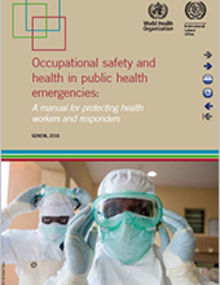This manual provides an overview of the main OSH risks faced by emergency responders during disease outbreaks and other emergencies, such as natural disasters, chemical incidents, radiological emergencies and emergencies involving conflicts. The intent is to assist organizations and workplaces to better prepare and respond to these events. The manual, which is particularly focused on needs in low-resource settings, provides technical guidance on good practices and procedures in establishing systems that can:
- reduce occupational exposures, injury, illness and death among response workers;
- decrease stress and reduce fears; and
- promote the health and well-being of health-care and other response workers.
The manual is intended for experts and officials in emergency response organizations who are responsible for workers’ OSH. This information is particularly important in countries with high risk of emergencies – such as those with high transmission of highly infectious agents (e.g. cholera, yellow fever, viral haemorrhagic fevers) and/or natural disasters, and chemical and radiological incidents. The key target audience includes personnel from agencies and organizations responsible for implementing the International Health Regulations (IHR) within a country, government agencies in the health and labour sectors, international organizations, nongovernmental organizations (NGOs), humanitarian and charitable bodies, faith-based organizations, hospitals and health-care facilities, public and private companies, security forces, employers and trade unions.
|

